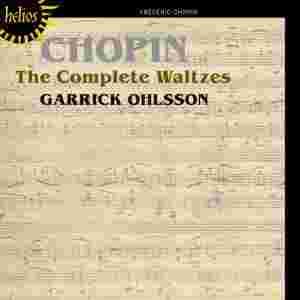>>> Większa okładka A <<<
The lilting waltz form we know today is derived from the Drehtanz and the Ländler, two lusty peasant dances from Germany and Austria. By the late 1770s classical composers had begun to write refined versions of the form with the three strong beats to the bar giving way to a strong downbeat and two faint afterbeats. Schubert brought the waltz to its first high point in the early 1800s. Its structure—a chain of uncomplicated melodies over a simple accompaniment—and this new lightness of rhythm led to a dance craze that swept the ballrooms of Europe.
The waltz reached Warsaw in the early years of the nineteenth century. As a teenager, Chopin would have known the piano waltzes of Polish composers like Maria Szymanowska, Kurpinski, Dobrzynski and Stefani. As far as the piano was concerned, the most important reference point was Weber’s ground-breaking Invitation to the Dance (1819). Chopin’s earliest waltzes were not written until 1829 (he had already composed some thirteen mazurkas and polonaises), by which time the waltzes of Joseph Lanner and Johann Strauss the Elder were all the rage. A year later, Chopin left Poland and arrived in Vienna, the Waltz City, before making his permanent home in Paris. Paradoxically, almost all of the twenty waltzes he would eventually compose are more Gallic in character than Viennese, far removed from those of Lanner and Strauss.
Only eight were published in Chopin’s lifetime. The two Waltzes Op 69, three Waltzes Op 70 and six of the seven early waltzes without opus numbers were all published posthumously. Outstanding among these are the poetic Op 69 No 2 in B minor and Op 70 No 3 in D flat major, inspired by his youthful love for the singer Konstancja Gladkowska and composed, according to Chopin, ‘early this morning’ (3 October 1829). Of all the posthumous waltzes rescued for posterity, we must be most grateful for the dazzling waltz in E minor (1830). As with the Fantaisie-Impromptu Op 66 it is a mystery why Chopin overlooked it; with its bravura introduction and coda and its spirited motifs this waltz has all the hallmarks of a mature work. |
|

